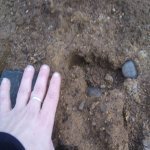You'd have been just as well off staying at a Holiday Express Inn last night.
I'm going to use the Denisovan case to illustrate my problem with this DNA shell game:
First of all, before ever discovering any fossils whatsoever, the Denisovan markers in the human family have been there all along, if you believe what they're saying. It's supposedly high in people from southeast Asia, which is interesting since southeast Asians tend to be small people and Denisovan fossils regularly reveal "robust" critters. So why did they finally "discover" this species with the 2008 finger bone find? The 40,000 year old and uncontaminated finger bone, I might add. Adding to the confusion is the question: where is the rest of this supposedly young female? Why wasn't the marker identified as a mysterious hist, then the later bone find confirm it? Is it the chicken, or the egg? Why would it matter? The DNA should be the same, no?
Secondly, if a fossil is contaminated, the DNA should tell us just who the contaminator is, right? If everybody within the chain of custody has DNA, and it doesn't match theirs, whose was it?
Like everything else, their claims about what DNA tells them doesn't match their own line of claims. The bottom line is that if what they want to believe can be supported with DNA evidence, voila'! They will call it "compelling", "convincing", "conclusive", "immutable", or otherwise <adjective> evidence. But if it leads them to where they do not want to go, it was contaminated.
It's as much an OJ trial as science. Perhaps more. The stakes are much, much higher. A 40,000 year old cave woman is cool stuff. An 800 lb. caveman running around the outskirts of Seattle or Portland is a bit unsettling. They really don't want to go there.


